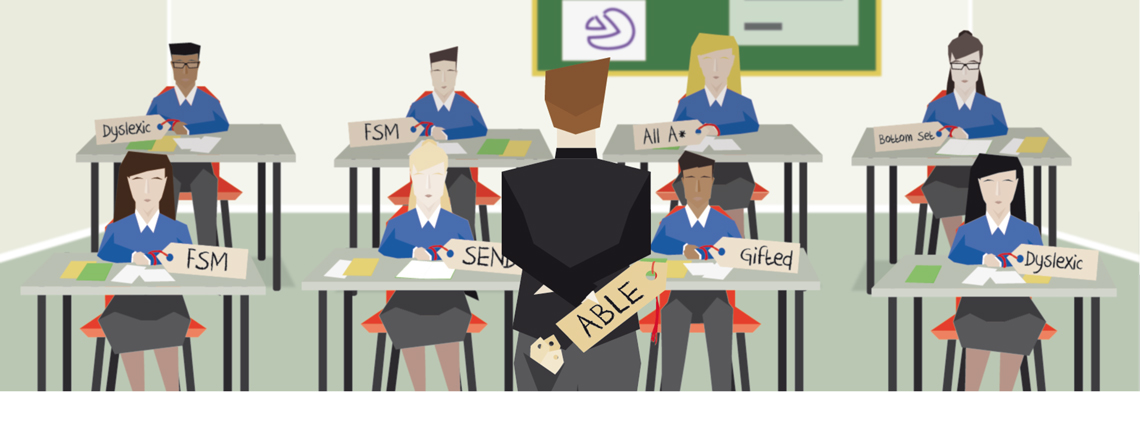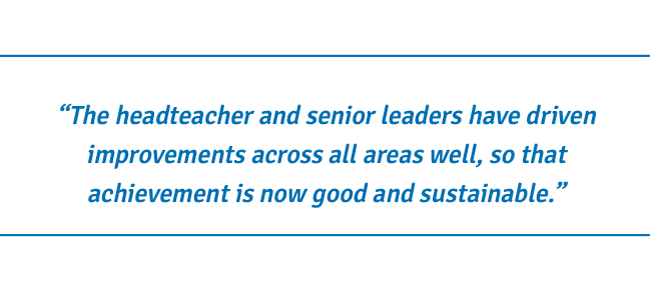I used to know a very wise educator, Sue Leyden, who insisted that “labels are for jam jars, not childrenâ€. In this single expression, she captured both the purpose and limitations of labels.
Their purpose is immediately apparent: it is to provide an efficient substitute for, or precursor to, experience. In this role they are invaluable: we can know the contents of that jar without needing to exercise taste, the price of an item before we take it to the till, and both the claimed merits and the likely side-effects of a medicine before we pop the pill. In these and many other instances, labels can save time, energy and even lives.
Given their uses, why not extend the application of labels to children? There is, after all, a strong educational tradition of doing just that. We readily acquiesce to the description of children in contrived conceptual binaries – they’re clever or ‘slow’, creative or pedestrian, compliant or oppositional, autistic or neurotypical, fluent readers or dyslexic, sporty or artistic, etc. And since all conceptual categories break down under interrogation, we also resort to increasingly specialised subcategories.
Consider, for instance, the bewildering array of diagnostic labels that cluster under the category of ‘ability’ – a continuum that sweeps all the way from profound and multiple learning difficulties through severe, moderate and mild learning difficulties past the ‘normal range’ to able, highly able/gifted and ‘profoundly gifted’ – with ‘dual exceptionality’ thrown in as an exotic addendum (clever kids, but with additional needs).
During my years as an educational psychologist, I became fully conversant in Labelese, and spoke it quite freely. It had its uses: labels seemed to provide reassurance and comfort to some children and parents – an escape from isolation, ‘freakiness’ or sense of culpability. Sometimes they even seemed to unlock resources from the local authority. Though ostensibly it was the needs rather than the label that were being serviced, it was a brave person who could resist a label that leapt definitively and oh so objectively from the diagnostic bibles of psychiatry (ICD-10 or DSM-IV), especially with the implicit threat of a tribunal lurking in the wings!
Money retains and expands its close interest in labels via the new and super-inclusive categories of DSM-V, where very normal and adaptive human behaviours such as grief and boisterousness are pathologised into the drug-receptive diagnostic labels of Big Pharma.
Over the fuller course of my career as an educator, I have become increasingly suspicious of labels. I have (too) slowly become aware that their very functionality lies at the root of their abuse: children are not adequately defined by their labels. Their essence is not composed of blackcurrant jam or 2cm pozidrive screws, but of a complex, invisible and unpredictable amalgam of knowledge, skills, values, beliefs, experiences, hopes and future intentions. To describe children in terms of their ‘defining’ (or most observable) characteristics is to see them far too simplistically.
For an individual, if not for an inanimate object, the practice of labelling is lazy and limiting and wrong. Lazy because labels discourage us from looking deeply; limiting because they impose artificial ceilings or expectations; and wrong because nature itself is not bound by false constraints, but is infinitely resourceful and resilient and generative.
The most resilient of individuals do transcend or break free from the anti-aspirational chains of their labels, be they educational subnormality (T.S. Edison), ADHD (Michael Phelps, Louis Smith), dyslexia (Erin Brockovich, Jamie Oliver and countless others), Marfan syndrome (John Tavener) or sensory impairment (Helen Keller, Evelyn Glennie, Stevie Wonder), but how many others are damned by the absence of opportunity or aspirational parents, and succumb to the determinism of their assumed life script?
But where labels take a truly insidious turn is in their troubled relationship with the fuzzy concept of ‘ability’ – arguably the most overrated educational construct in the developed world. The psychometrician John Hattie has provided compelling evidence that, especially when tasks are demanding, it is a learner’s metacognitive skills rather than his/her ‘ability’ that best predict his/her learning outcomes.
Our classrooms need more challenge and more challenge-receptive learners, not more ability labels, yet we organise our classes and sometimes even our entire schools around streaming and setting and ‘mixed-ability’ teaching. We provide euphemistic names for our ability groups and are often shy to name the beast, but label we do, and we do this at the behest of politicians and chief inspectors in the face of research evidence that is equivocal at best, and contra-indicative at worst.
There are exceptions to the rule, in the form of many inspirational schools and teachers, and I have had the privilege of seeing many of these institutions and individuals at work. Our bravest and best teachers have always found more useful concepts than ability labels to teach by (cf. the inspirational Learning Without Limits study based at Cambridge University), and some Scandinavian countries have even made ability grouping illegal. And what a joy to see the National Association of Gifted Children take the brave, principled and evidence-led path of jettisoning ‘giftedness’ from their title, and relaunching as Potential Plus UK – the ‘plus’ representing the qualities of persistence, risk-taking and grit that contemporary research places at the heart of true fulfilment and achievement.
In short, I believe it’s time for our profession as a whole to give labels in general, but ability labels in particular, the perspective they deserve. We must recognise that, whilst they might serve our cravings for efficiencies in a technical-rational system of education, in the end it is not efficiencies that we ought to be seeking. The deeper educational gifts lie beyond easy categorisation, and performance accountabilities in the form of examination results are the beneficiaries, not the casualties, of a label-lite school culture. Again, nature is our best teacher here, for nature does not value efficiency; it values diversity. And diversity needs no labels, no more. SR



